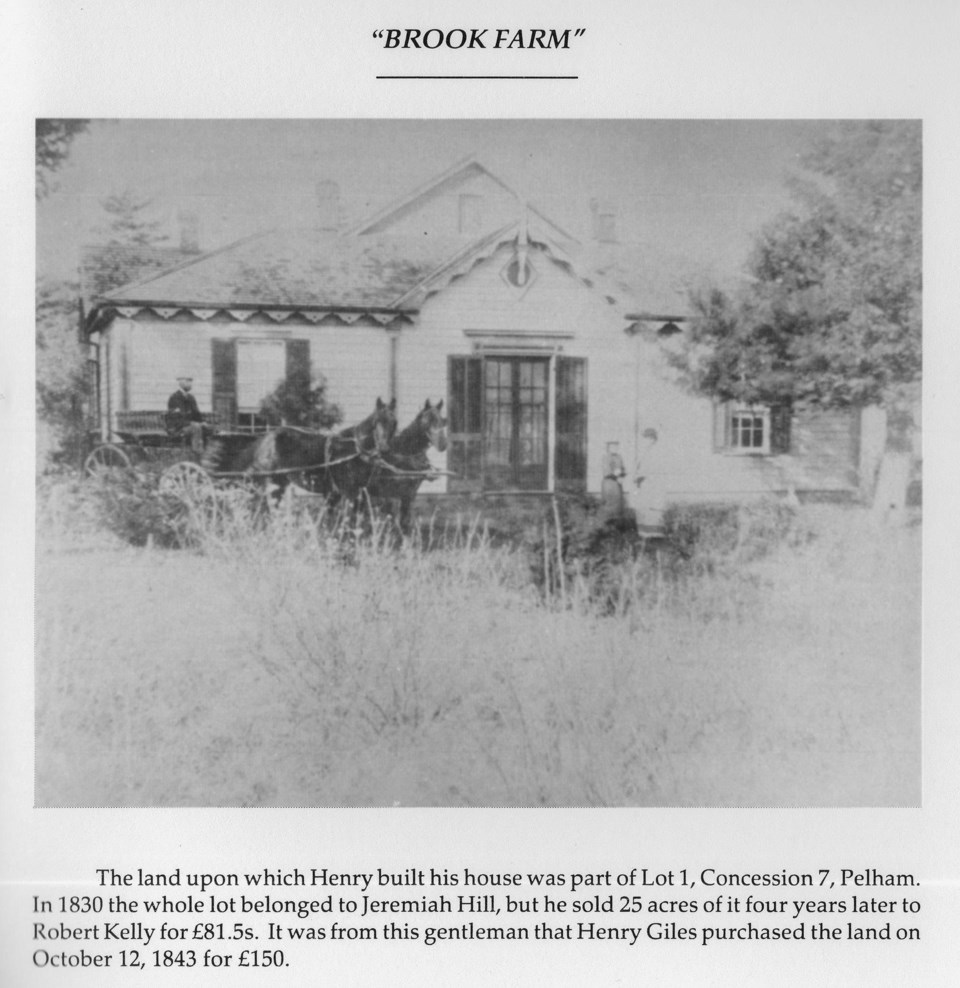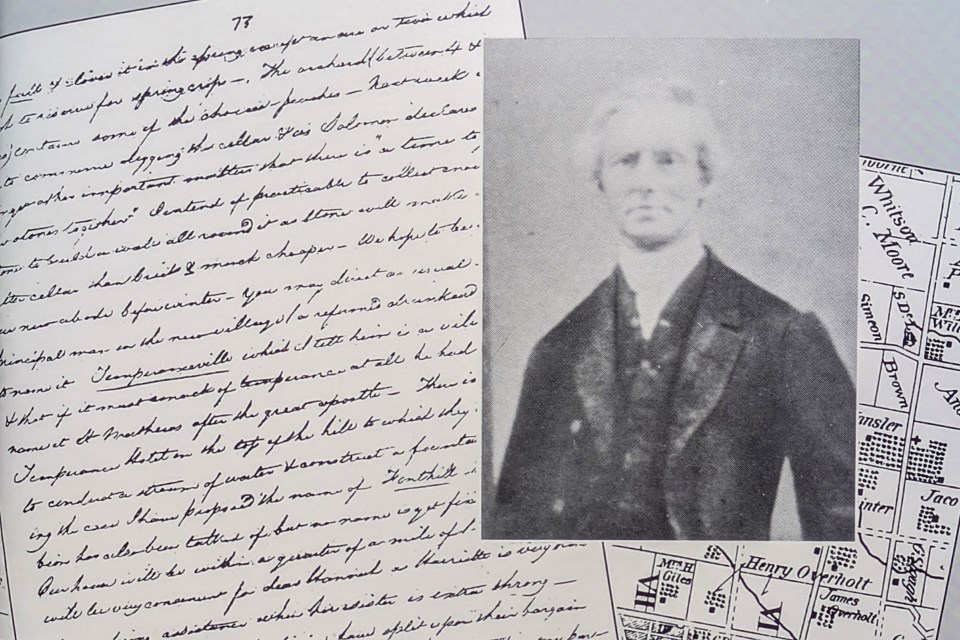Pelham today is a bustling town, home to some 18,000 people. It is hard to imagine living here when it was a sparsely populated rural area and Fonthill was a hamlet of a few hundred residents.
Fortunately, today we have a “special correspondent” in the person of Henry Giles. A newcomer to the area in 1840, he described his new home in letters to relatives in England. He kept copies of these letters and they were handed onto his descendants. When his great-grandson Leo Giles read the beautifully handwritten letters decades later, he decided to transcribe Henry’s words and type them up. A Pelham Historical Society student read them and, realizing their historical value, asked if the Society could publish them. In 1992 they were put into a book, Mute Words, Living Voices, and copies of this book remain available today.
The Pelham that Henry described was not that of the first settlers. They had no time for writing as they struggled to grow enough food for their families. But by 1840 there was a pattern of lots and concessions with established farms. An elected Township Council passed bylaws to regulate livestock control and road maintenance. Some stores had been started but business activity was limited.

Henry considered selling imported goods from England, but found no market for such things as hats and parasols. “Caps will not sell at any price as the frost cracks the oilskin,” he wrote.
Henry explored the area in winter by horse and sleigh, finding that, “You may travel at almost railway speed”. In summer, roads were dusty or muddy and often led through “a regular wall of forest”.
In Henry’s time, you could hear Niagara Falls from Pelham. “By walking up the mountain about 1-¼ miles we can see mostly the spray of the great Falls”. Henry and a friend decided to venture under Niagara Falls in March. To walk on the ice “we were provided with creepers, iron spikes attached to the soles of shoes by means of straps”. He did feel a little uneasy when one of his straps broke!
To read these letters is to see a Pelham largely lost to us today. But human problems common to any age come through: a sick child “a little girl who in addition to Hooping cough is suffering very much from her teeth”. The low standard of education upset Henry – “One master has charge of 20-40 boys and girls of all ages from 6-16”. He was lonely: “We have formed no friendships in the New World…Canadian society being below par”. Yes, Henry found plenty to criticize, and some of the words he uses would not be acceptable by today’s standards. However, this does not diminish the historical value of his letters.
Henry’s decision to become a full-time farmer was fulfilled in 1843 by the purchase of a property of his own, 25 acres with “a spring of excellent water, an orchard and 16 acres of level arable land”. By December the family had moved into the cottage Henry had built himself. As the nearby village developed, Henry was inspired to suggest a name: Fonthill.
By the time Henry died in 1871 many of the amenities he felt wanting had arrived: village schools run by elected trustees, a library, stores, mills and inns. His letters show a township on the verge of the development that led to the Pelham we live in today.
Copies of Mute Words, Living Voices – The Letters of Henry Giles are available at Shoppers Drug Mart, J&J Florists, and Nature’s Corner Café.
Mary Lamb is a past-President of the Pelham Historical Society
